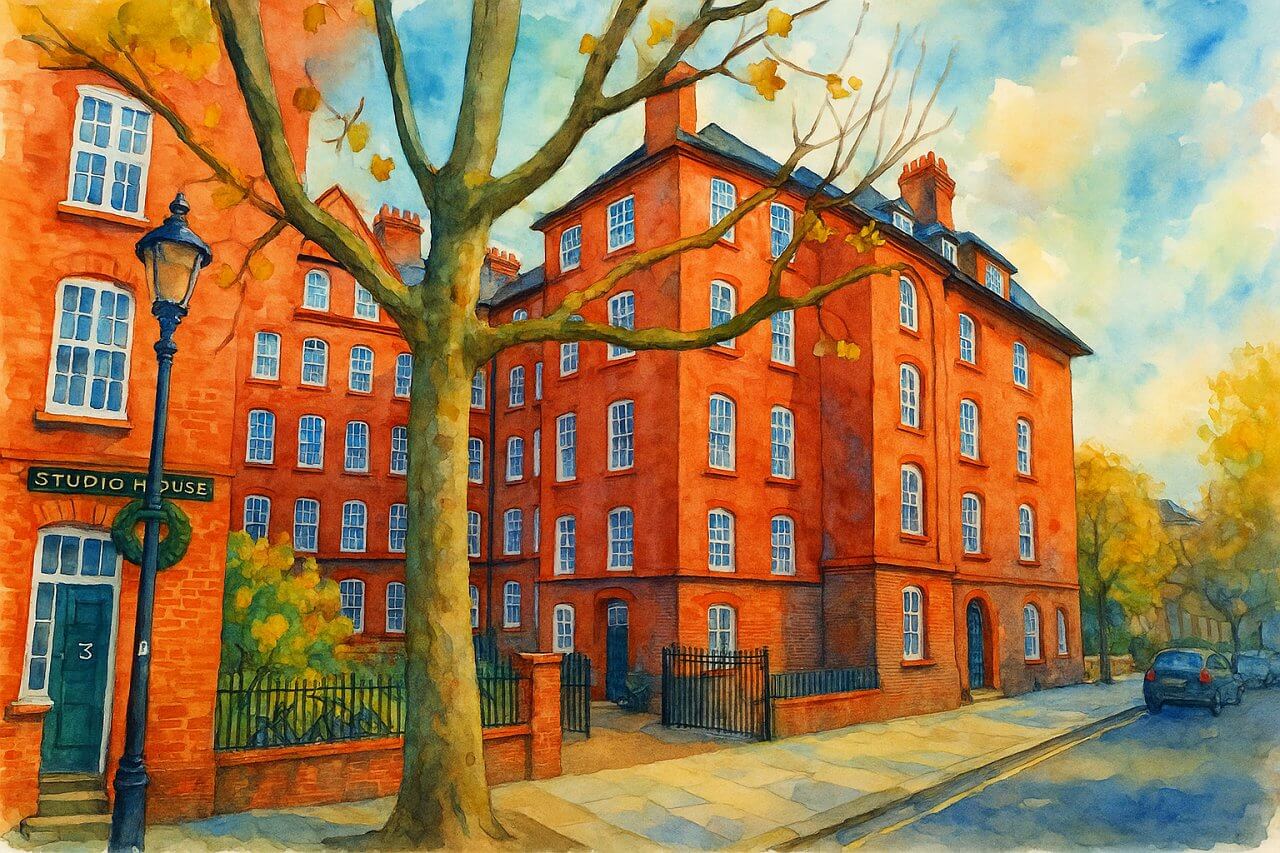
Millbank Estate, London
Discover one of London's first purpose-built social housing estates, steeped in history and set in the heart of Westminster.
The Millbank Estate (GPS: 51.4927, -0.12968) is located in the City of Westminster, central London, just a stone’s throw from the River Thames. It sits between Tate Britain and Vauxhall Bridge Road, flanked by John Islip Street, Atterbury Street, Great Peter Street, and Marsham Street. It is within easy walking distance of Westminster Abbey, Victoria Tower Gardens, and the Houses of Parliament.
Nearby transport links include Pimlico and Westminster Underground stations, as well as several bus routes running along Millbank and Horseferry Road, making the estate a well-connected residential area in the heart of London.
How Big is the Millbank Estate?
The Millbank Estate spans over 17 acres and contains more than 560 flats across 26 blocks. The blocks are typically four or five storeys high, designed around shared courtyards and pedestrian walkways. It is one of the largest early municipal housing estates in the capital, demonstrating both scale and an early commitment to decent, affordable housing in a prime urban location.
History of the Millbank Estate
The Millbank Estate was constructed between 1897 and 1902 by the newly formed London County Council (LCC), and was one of the earliest examples of large-scale, planned social housing in Britain.
This came at a time when Victorian London was grappling with severe overcrowding and unsanitary slum conditions. The LCC launched an ambitious civic effort to improve living standards for working-class Londoners, and Millbank Estate became a flagship development in this movement.
The estate was considered a major improvement on the poorly built slums that had previously stood on the site, offering residents a clean, well-planned environment with improved ventilation, sanitation, and community spaces.
How Did It Get Its Name?
The estate takes its name from Millbank, the historic road and area it is built upon. The name “Millbank” is believed to derive from a 14th-century watermill that once stood on the banks of the River Thames nearby. The word “bank” in the name refers to its riverside position.
Millbank was also the site of the notorious Millbank Prison, a massive penitentiary completed in 1821 that dominated the area until its closure in 1890. The prison's demolition provided the land needed to build the estate. Thus, the name “Millbank” persisted, linking the area’s evolving civic functions from incarceration to social reform.
When Was It Redeveloped into the Present Estate?
Construction on the current Millbank Estate began in the late 19th century, following the closure and demolition of Millbank Prison. Building commenced in 1897 and was completed in 1902. The project was the London County Council’s first large-scale housing scheme and served as a blueprint for later council estates across London.
The estate was designed with an eye for both durability and aesthetic appeal. Architecturally, the estate showcases red-brick Edwardian-style blocks with slate roofs, detailed brickwork, and internal courtyards. Each block is named alphabetically, beginning with “Aubrey” and ending with “Wilkie,” creating a logical and organised navigation system within the estate.
Fun Facts About the Millbank Estate
- Alphabetical Blocks: The estate’s blocks are famously named in alphabetical order—from “Aubrey” to “Wilkie”—making navigation unique and memorable.
- Artistic Neighbour: The estate sits next to the world-renowned Tate Britain, which occupies part of the former Millbank Prison site. Residents live mere metres away from masterpieces by Turner, Blake, and Hockney.
- A Historic Shift: The estate’s creation marked a significant shift in housing policy—away from slum clearance and toward proactive public housing development by local government.
- Architectural Influence: The Millbank Estate inspired numerous other council housing projects across Britain during the early 20th century.
- Blue Plaque Residents: Several prominent figures, including politicians and social reformers, have lived on the estate, though many of the flats remain in use as social housing today.
Today’s Millbank Estate
Today, the Millbank Estate remains a largely residential community, with a mix of social housing tenants and private owners following the Right to Buy scheme introduced in the 1980s. Its location, architectural charm, and historical legacy make it highly sought after.
Conservation efforts have preserved much of the estate’s original Edwardian character. It falls within the Millbank Conservation Area, which protects its unique design and streetscape. The estate continues to reflect the early ideals of social equity, urban design, and civic responsibility.
Millbank Estate is a rare example of how well-designed public housing can stand the test of time, contributing positively to both the community and London’s architectural fabric.
Quick Facts About Millbank Estate
- Location: Westminster, London, near the River Thames
- Nearest Tube: Pimlico, Westminster
- Size: Over 17 acres; 560+ flats in 26 blocks
- Built: 1897–1902 by the London County Council (LCC)
- Architectural Style: Edwardian red-brick blocks, 4–5 storeys
- Name Origin: Named after Millbank area; formerly site of Millbank Prison
- Fun Fact: Blocks are named alphabetically from Aubrey to Wilkie
- Nearby Landmarks: Tate Britain, Houses of Parliament, Thames Path
- Conservation Status: Located in the Millbank Conservation Area
Millbank Estate is  on the Map of the City of Westminster, London
on the Map of the City of Westminster, London

Painting of Millbank Estate, London (View image in full size)